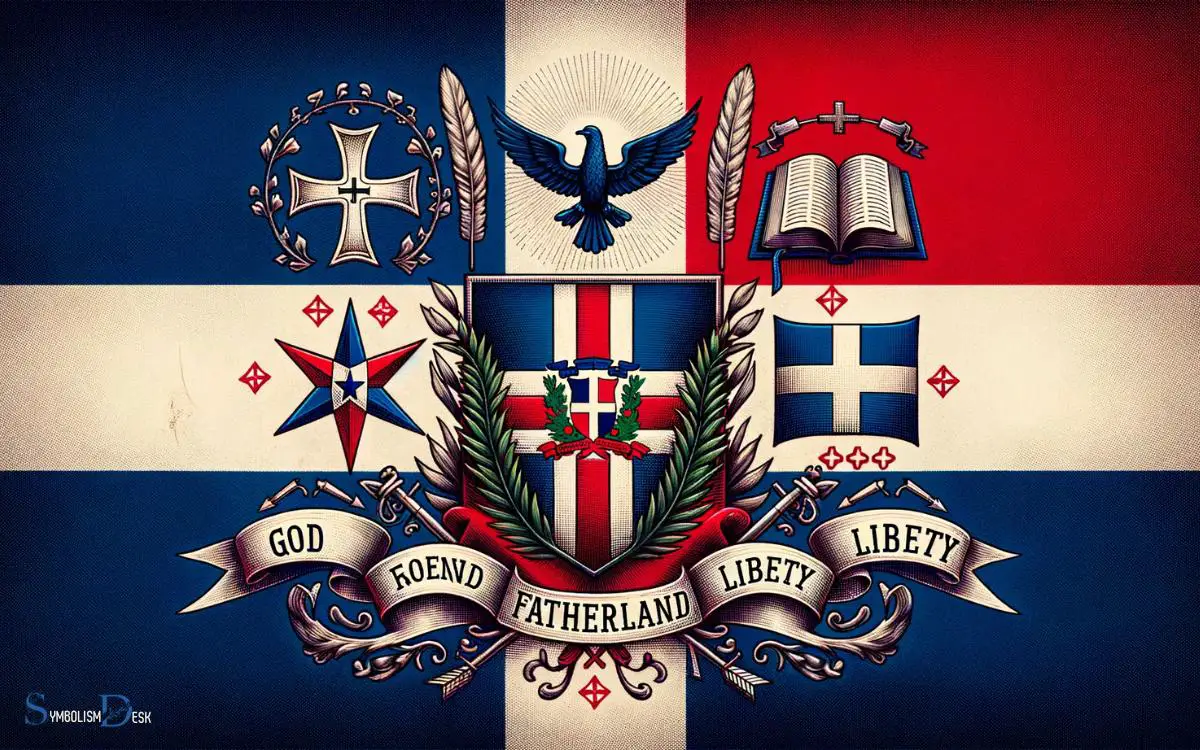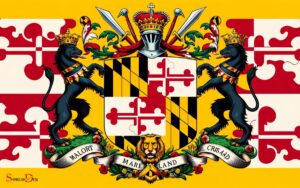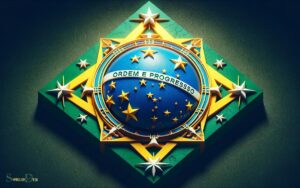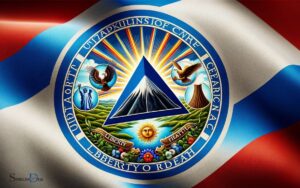What Does the Dominican Republic Flag Symbol Mean? Pride!
The Dominican Republic flag symbol represents the country’s independence, national pride, and the willingness to fight for freedom and sovereignty.
The flag of the Dominican Republic consists of a white cross that divides the flag into four rectangles, with each rectangle having alternating blue and red colors.
In the center of the cross, there is a coat of arms featuring a shield surrounded by two branches – one of laurel and one of palm – and topped by a blue ribbon that reads “Dios, Patria, Libertad,” which translates to “God, Fatherland, Liberty.”

Key Takeaway
6 Symbolism of the Dominican Republic Flag Meaning
| Symbol | Meaning |
|---|---|
| Blue and Red Stripes | The blue represents liberty and the red signifies the bloodshed of those who fought for the country’s independence. |
| White Cross | The white cross symbolizes the struggle for a united and free country. |
| Central Shield | The central shield represents the protection of the country’s institutions and values. |
| Laurel and Palm Branch | The laurel branch (on the left) signifies victory, and the palm branch (on the right) symbolizes martyrdom. |
| Bible and Cross | The Bible and cross in the central shield represent the Christian faith of the Dominican people. |
| Latin Motto | The Latin motto “Dios, Patria, Libertad” translates to “God, Fatherland, Liberty,” signifying core values. |
History of the Dominican Republic Flag
The history of the Dominican Republic flag has been intricately intertwined with the country’s political and social developments, often undergoing changes in design and symbolism.
Originally adopted in 1844, the flag underwent modifications during various periods of the country’s history. The flag’s early designs embodied the nation’s struggle for independence and its subsequent evolution.
The most significant changes occurred during the eras of Trujillo and the Restoration War. These changes reflected the political ideologies and national sentiments of the time.
Understanding the historical context of these modifications provides valuable insight into the evolution of Dominican identity and values.
The historical transformation of the flag reflects the nation’s journey of growth, resilience, and identity. This identity is further amplified through the symbolism of the flag’s colors.
Significance of the Flag’s Colors
Embodied within the Dominican Republic flag, the colors red, white, and blue hold deep historical and symbolic significance, representing the nation’s ideals, heritage, and values.
The significance of the flag’s colors is as follows:
- Red symbolizes the blood shed by the country’s heroes in the fight for independence and freedom.
- White stands for salvation and peace, reflecting the country’s commitment to peace and unity.
- Blue represents liberty and the ideals of progress and independence.
The arrangement of the colors, with the white cross, reflects the country’s strong ties to Christianity and its faith in God.
These colors not only pay homage to the country’s history, but also encapsulate the aspirations and principles that the Dominican Republic upholds.
The Meaning Behind the Coat of Arms
The coat of arms on the Dominican Republic flag represents the nation’s history, values, and aspirations.
The central blue ribbon displays the national motto, ‘Dios, Patria, Libertad’ (God, Fatherland, Liberty), encapsulating the country’s deep-rooted religious beliefs, patriotic spirit, and quest for freedom.
The Bible, open to John 8:32, symbolizes the nation’s commitment to truth and enlightenment. The cross represents the Christian faith, while the gold frame signifies the noble aspirations of the people.
The flag’s red and blue colors, along with the white cross, reflect the bloodshed of the nation’s heroes, the sky and hope, and the unity of the people, respectively.
Altogether, the coat of arms conveys the Dominican Republic’s rich history, unwavering values, and its people’s fervent aspirations for a bright future.
Evolution of the Flag’s Design
An evolution of the flag’s design can be observed through the modifications made to its elements over time, reflecting the nation’s evolving identity and historical milestones.
The Dominican Republic flag has undergone several changes since its inception in 1844, each alteration carrying significance in representing the country’s values and struggles.
Key points in the evolution of the flag’s design include:
- Initial Flag: The original flag featured a white cross, symbolizing the struggle for independence and sovereignty.
- Addition of the Coat of Arms: In 1863, the flag incorporated the national coat of arms, signifying the country’s unity and strength.
- Changes in Colors: The flag’s colors have been subject to adjustments, with the shade of blue and red varying to reflect different aspects of the nation’s history.
- Modern Standardization: The current design, established in 1913, solidified the flag’s elements and their arrangement, representing stability and national pride.
What Does the Symbol on the Guatemalan Flag Represent?
The guatemalan flag symbol meaning holds great significance. The emblem on the flag depicts the Quetzal bird, a sacred creature in Mayan mythology, representing freedom and self-determination. Its vibrant colors, blue, and white, signify peace and purity. The symbol reflects Guatemala’s rich cultural heritage and the aspirations of its people for liberty and harmony.
What is the Meaning Behind the Symbols on the Dominican Republic Flag?
The symbols on the Dominican Republic flag each have significant meaning. The white cross represents the relationship between the Dominican Republic and the mother country, Spain. The flag’s blue color represents liberty, whereas the red symbolizes the blood shed by patriots. The symbols on the Brazilian flag meaning, on the other hand, differ and convey unique messages about the country’s history and values.
Cultural and National Identity Representations
Representing the cultural and national identity of the Dominican Republic, the flag’s elements embody the values and history of the nation.
The flag’s primary colors, blue, red, and white, symbolize the country’s struggles for independence and sovereignty.
The white cross, dividing the flag into four quarters, represents the sacrifices made by the country’s liberators and their commitment to the nation’s freedom.
The national coat of arms at the center features a Bible, a gold cross, and a red Phrygian cap, which together signify the nation’s strong Christian faith and its fight for liberty.
Additionally, the palm branch and the bay laurel branch surrounding the coat of arms exemplify peace and the country’s independence.
Altogether, these elements serve as powerful representations of the Dominican Republic’s cultural and national identity.
Conclusion
In conclusion, the Dominican Republic flag represents a rich history, cultural identity, and national pride. The colors and symbols on the flag hold deep significance, reflecting the struggles and triumphs of the country.
As the flag continues to evolve, it remains a powerful symbol of unity and strength for the Dominican people.
So next time you see the flag, remember that it’s not just a piece of cloth, but a representation of a nation’s story and spirit. faith. By understanding and respecting the significance of this flag, we can also appreciate the country’s unique heritage and culture.






